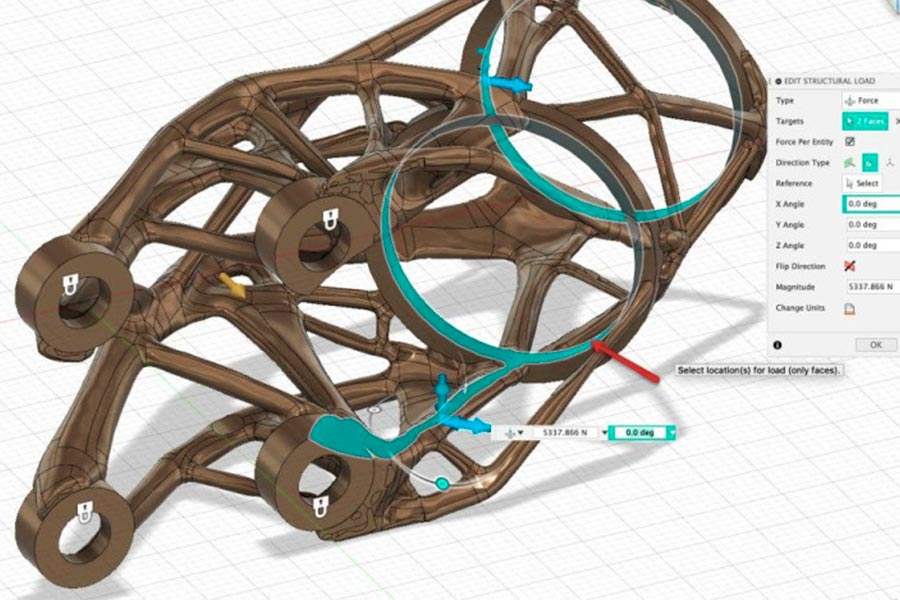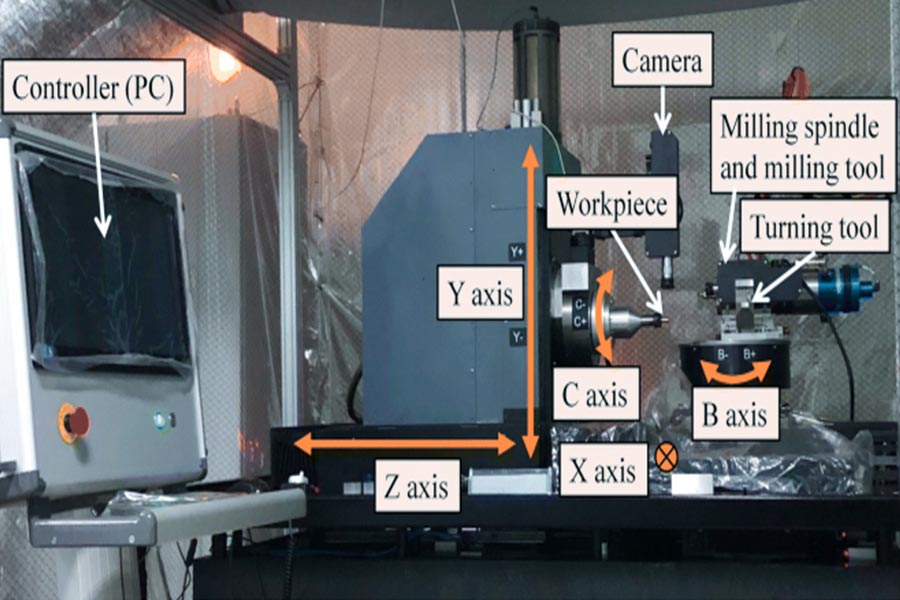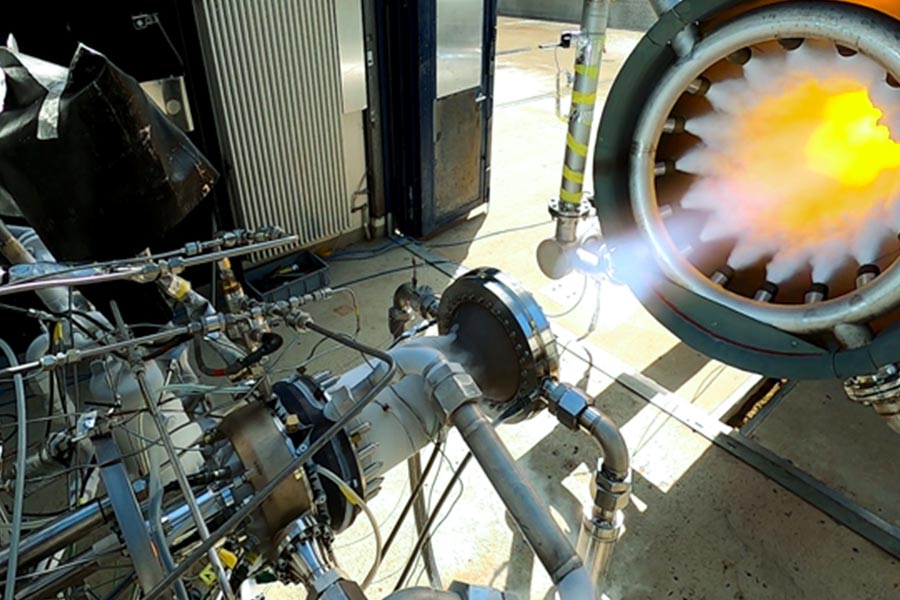Im Bereich der Präzisionsherstellung, Successful design and engineering planning require collaborative consideration from several Dimensionen wie die Steuerung der Materialauswahltoleranz und die geometrische Strukturoptimierung.
Durch Kombination von Advanced Multi-Achs-Achs-Maschinenmaschinen-Werkzeugmaschinen mit AI-DRiven-Optimierung, Js Achs Achs. 95% der Projekte und senkt die Produktionskosten um 20%. Ob data-v-7b79c893 = "", ob IT aAla-v-7b79c893 = "", ob IT aAla-v-7b79c893 = "", ob IT AAGE data-V-7b79c893 = "". Komponenten oder eine Kunststoffkomponente für medizinische Qualität, JS 'Engineering-Team (mit einem Durchschnitt von mehr als 20 Jahren Erfahrung) können den gesamten Prozess von Dokumentenübersicht unterstützen (Support-Formate wie Schritt, IGEs, STL usw.) bis hin zur Materialauswahl.
<"> <"> <"> <"> <"> <"> <"> <"> <"> <"> <"> <"> <"> <"> <"> <"> <"> <"> <"> <"> <"> <"> <"> <"> <"> <"> <"> <"> <"> <"> <"> <"> <"> <"> <"> <"> <"> <"> <"> <"> <"> <"> <"> <"> <"> <"> <"> <"> <"> <"> <"> <"> <"> <"> <"> <"> <"> <"> <"> <" href = "https://jsrpm.com/blog/how-does-cnc-machining-work"> CNC-Bearbeitung ist eine Technologie, die die Teilbearbeitung automatisch durch die digitale Computersteuerung von Werkzeugmaschinen wie Latten und Fräsenmaschinen vervollständigt. Unlike traditional manual operation, CNC systems can control tool Pfade, Geschwindigkeit und Futtergeschwindigkeit genau durch vorprogrammierte Anweisung, die die Bearbeitungseffizienz und -konsistenz erheblich verbessert. für Beispiele in Beispiel, in Beispiel, in Beispiel, in Beispiel, in Beispiel, in Beispiel, in Beispiel, in Beispiel, in Beispiel, in Beispiel, in Beispiel, in Beispiel, in Beispiel, in Beispiel, in Beispiel, in Beispiel, in Beispiel, in Beispiel, in Beispiel, in Beispiel, wurde dies ein Beispiel es er eingestellt. href = "https://jsrpm.com/blog/what-re-the-types-of-cnc-machining"> CNC-Technologie kann eine komplexe Konturbearbeitung von rotierenden Werkstücken realisieren , wie z. B. Schaftteile oder präzise Außenkreisfläche, während das menschliche Fehler reduziert wird. CNC-Programmierung erfordert eine Beherrschung der folgenden Kerntechniken, die den gesamten Bearbeitungsprozess verwendet werden: Was ist die Definition der CNC-Bearbeitung?
Welche Fähigkeiten sind für die CNC-Programmierung erforderlich?
Was sind die Vorsichtsmaßnahmen für die Wanddicke?
1. Die Wanddicke ist gleichmäßig, um eine Verformung
zu vermeiden In der Mühlenbearbeitung kann eine ungleichmäßige Wandstärke zu Spannungskonzentration und Verhängen oder Knacken nach dem Mahlen führen. <"> Während des Entwurfsprozesses sollten Anstrengungen unternommen werden, um die Dicke der konsistenten Wand aufrechtzuerhalten oder bei Bedarf Stützstrukturen hinzufügen.
2. Die minimale Wandstärke muss mit der Verarbeitungsfähigkeit übereinstimmen 3. STRIGHTEN Die Sehnen und optimieren Sie die Übergangs-Ecken 4.Materialeigenschaften und technologische Anpassung in der Verarbeitung hochgeklagte Materialien wie Titaniumlegierungen benötigen dickere Wanddicke, um 5.Shrinkage-Rate und -Toleranzreservierung casting oder Injektionsformteile Erfordern einer Verkleinerungsrate, aber eine Verkleinerungsrate, aber eine Verkleinerungsraten. href = "https://jsrpm.com/industry/medical-pice"> Präzisions-CNC-Teile (wie medizinische Komponenten) müssen für Größenfehler durch Wiederaufbereitung (wie Schleifbearbeitung) und ein Schleifmarge von 0,02-05 mm kompensiert werden.
6. Ausgleich des Werkzeugpfads und der Verarbeitungseffizienz Complex wall Dicke Strukturen erfordern Optimierung des Fräsens Bearbeitung Werkzeugpfad Um einen häufigen Tool-Austausch zu vermeiden. 7. Dimensionale Änderungen nach der Oberflächenbehandlung if Weitere Ausbrüche Polieren des Bearbeitens ist erforderlich
Die geometrische Komplexität hat einen großen Einfluss auf die CNC-Bearbeitung, insbesondere bei der Bearbeitung und Bearbeitung von Lathe. Die folgenden Unterschiede und Herausforderungen müssen betont werden: 1. Data-V-7B79C893 = ""> Werkzeugpfadplanung und Bearbeitungseffizienz 3. Verarbeitungsgenauigkeit und Oberflächenqualität
Was hat der Einfluss der geometrischen Komplexität auf CNC?
- Milling Bearbeitung
- 5. Data-Len = "35" Daten-V-7b79c893 = ""> Wiederaufbereitung und Qualitätskontrolle
- Milling Bearbeitung : Komplexe Formen können Restburre oder Bearbeitungsmarken haben und Erfordernde zusätzliche Polieren oder elektrochemische Behandlung oder elektrochemische Behandlung oder elektrochemische Behandlung.
- Drehbearbeitung: Präzisions-Threading- oder Paarungsflächen erfordern spezielle Messwerkzeuge zur Inspektion, während herkömmliche äußere Außenfelgen mit Stoppern schnell geprüft werden können.
herkömmliche CAD-Modellierung im Vergleich zu generativem AI-Design: Können Algorithmen die Ingenieurerfahrung ersetzen?
In der traditionellen CAD-Modellierung und Generierung von AI-Designvergleich ">"> ">"> ">"> ">"> ">"> ">"> ">"> ">"> "> Besonders können Sie das Zulassungsfest." CNC, beide müssen sich ergänzen. 1. Data-V-7B79C893 = ""> Vergleich der Kernkompetenzen
| herkömmliche CAD-Modellierung | Generatives AI-Design | JS Company Practice | |
| Designlogik | Ingenieure Modell von Hand gemäß den Gesetzen der Physik und Erfahrung. | Künstliche Intelligenz erzeugt Designs durch Algorithmen und stützt sich auf Trainingsdaten für das Musterabgleich. | JS-Ingenieure verwenden CAD-Erfahrung, um die KI-Ausgangslösungen zu optimieren. |
| Präzisionskontrolle | Toleranzen von ± 0,005 mm (95% in JS-Fällen). | Künstliche Intelligenz erzeugt Designs durch Algorithmen und stützt sich auf Trainingsdaten für das Musterabgleich. | Js kompensiert die Verarbeitungsrisiken von AI-generierten Designs durch technische Erfahrung. |
| Effizienzverbesserung | Komplexe Strukturen erfordern längere Iterationen. | Erzeugen Sie schnell mehrere Designs (z. B. js verkürzt den Zyklus um 15%). | Künstliche Intelligenz hilft, das anfängliche Design zu verkürzen, wobei Ingenieure Schlüsselknoten steuern. |
| Kostenoptimierung | Erfahrung- und Prozessauswahl von Erfahrung ( 20% Kosteneinsparungen bei JS ). | Automatisierte Erzeugung kostengünstiger Lösungen, Machbarkeit zu verifizieren. | JS kombiniert KI-Empfehlungen mit Ingenieurerfahrung, um Kosten und Qualität auszugleichen. |
| Branchenanpassungsfähigkeit | Widely used in aerospace, automotive and other high-precision fields. | Outstanding in standardised components such as general purpose parts. | JS integrates two approaches to customizing industrial robot components. |
2.Limitations of Generative AI
- Lack of machining experience: CNC machining involves practical experiences such as tool path planning and setting of cutting parameters. Models generated by AI may ignore the feasibility of machining (such as tool interference and stress concentration) and require calibration by engineers.
- Material property adaptation: JS company processes more than 50 materials (metals, composites, etc.), each with processing characteristics that make it difficult for AI to fully grasp the impact of material microstructure on shaping, relying only on material selection recommendations from engineers.
- Quality control boundaries: In the JS case, for example, 98% of orders were delivered on time, relying on engineers to adjust processing errors in real time. Currently, AI cannot dynamically respond to variables such as machine tool state, ambient temperature and humidity.
3.The manifestation of collaborative value
| Step by Step | The role of AI | The role of engineers | JS case results |
| Conceptual design | Generate multiple solutions to shorten the cycle (e.g. JS reduces design time by 15%). | Choose a solution that meets the processing logic. | Client projects were completed an average of 15% ahead of schedule. |
| Optimization | The combination of cutting parameters is recommended. | Adjust parameters according to machine performance and material characteristics. | Precision ±0.005mm (95% JS compliance rate). |
| Cost control | Provide lightweight design advice. | Verify manufacturability and balance costs. | Help customers reduce manufacturing costs by 20%. |
| Innovation breakthrough | Explore the possibilities of non-traditional structures. | Evaluate the feasibility of mass production and improve the design. | Develop multiple patented precision components. |
Algorithms are tools, experience is irreplaceable
The practical logic of JS: Using generative AI for initial design exploration (such as quickly generating multi version shell structures), followed by engineers screening and optimizing based on CNC process constraints (such as JS's ±0.005mm tolerance), material properties (such as titanium alloy processing temperature), and customer case experience (such as batch consistency of automotive molds).
Generative AI can improve design efficiency, but the core of machining CNC experience and quality control-still needs to be led by senior engineers. The success of JS demonstrates that the human-machine collaboration model (AI assisted+manual verification) is the most optimal solution for current manufacturing.

What is the core logic of tool path optimization in CNC multi axis machining?
1.Minimize empty motion
- By adopting spiral feeding and cycloid path, the tool path is optimized to reduce the idle time in the process of non-cutting.
- JS correlation: JS promises fast delivery in 1-2 weeks, with its efficient path planning technology shortening processing times while maintaining ±0.005 mmWave accuracy.
2.Optimization of dynamic cutting parameters
- Real-time feed speed and spindle speed are adjusted according to material characteristics and tool load, balance efficiency and surface mass.
- JS correlation: 95% of projects achieve ultra-high accuracy, with 25% growth in repeat business, thanks to a team of experts fine-tuning cutting parameters.
3.Tool load and life management
- In order to avoid overload or vibration, the tool life can be extended by path smoothing and axial depth control.
- JS correlation: Support complex metal/composite processing with wearable cutting tools and optimization strategies, resulting in a 20% reduction in customer costs.
4.Machine tool kinematic adaptation
- According to the characteristics of the five-axis machine tool, a path is designed to minimize interference and improve accessibility by making maximum use of the rotating axis.
- JS related: Its multi-axle processing capability spans more than 50 material types and relies on advanced machine tool control technology to make complex parts.
5.Optimization of material removal rate
- By means of contour machining high-speed milling, the material removal rate is improved and rough machining time is shortened.
- JS correlation: Average project life for customers was shortened by 15% due to effective route planning and material selection (e.g. efficient processing of titanium alloys).
6.Process constraints and tolerance control
- Combine CAD/CAM simulation, the feasibility of this pathway was validated to ensure that it meets the accuracy requirements of ±0.005mm.
- JS association: Supports the import of standard documents such as STEP/IGES, and the engineering team ensures the viability of the route through more than 30 annual training sessions.
7.Sustainable manufacturing integration
- Optimize waste minimization path and reduce energy energy consumption by using energy-saving equipment.
- Its environmental protection measures (such as material recycling) and 20% reduction in energy consumption indirectly reflect the resource efficiency of path optimization.

What are the difficulties in processing the irregular cooling chamber of rocket nozzle?
Processing difficulties
1.Treatment of complex irregular structures
- Rocket nozzle cooling chamber usually has complex geometrical characteristics such as thin wall, variable cross section and small flow channels. Traditional CNC machining is prone to interference or surface quality defects. Accurate path planning needs to be achieved through multiaxis coupling,such as five-axis machining.
- JS company can effectively address these challenges with its high-precision five-axis machine tools.
2.Characteristics of high-temperature alloy materials
- Refractory materials with high hardness and poor thermal conductivity, such as titanium alloys, are commonly used in Cooling chambers. In the process, it is easy to appear tool wear, cutting force, etc.
- JS company uses professional coated cutting tools to ensure the stability of processing by optimizing parameters such as cutting speed and feed speed. The precision of the processing can be ±0.005mm, satisfying strict tolerance requirements.
3.Cleanliness and consistency of internal flow channels
- The interior of the cooling chamber needs to be kept absolutely smooth to avoid fluid resistance, as traditional machining tends to create residual burrs or debris.
- JS company uses high-pressure water jet, electrolytic polishing and other post-processing techniques, and works with CNC online detection system to ensure the interior quality of the cavity complies with aerospace standards.
4.Thermal deformation control
- Long-term hightemperature treatment will lead to thermal expansion of the material, affecting size accuracy. Through constant temperature workshop, real-time temperature compensation algorithm and segmental processing strategy.
- JS company can control the the thermal deformation error to 0.01 mm.
JS company's core advantages
| Technical capabilities | Specific measures | Application effect |
| Multi axis precision machining | Five axis coupled CNC system to support complex surface machining. | The cooling chamber channel is formed in one go to reduce clamping errors. |
| Special material processing | Experience in working with high temperature materials, such as Inconel and titanium alloys, with CBN cutting tools. | Surface roughness ≤0.8μm, strength loss<3%. |
| Digital quality control | Comparison and verification between CMM and CAD. | The pass rate is over 98% and the rework rate is down by 70%. |
| Efficient production process | Modular programming, automated loading and unloading system. | Average distribution cycle reduced to 10-14 working days. |
| Aerospace grade certification | Certified by 9001 and AS9100D aerospace quality management system certification. | We supply components for SpaceX, Blue Arrow Aerospace and others. |
Typical cases
JS company uses nickel-based superalloy to forge blank in integral, processing a new type of rocket engine shaped cooling cavity. Through CNC multiaxial machining and electrolytic polishing, the uniform cooling channel with 0.3mm wall thickness is achieved, and the thermal conductivity efficiency improved by 40% and engine thrust by 15%.

How does JS process superhard materials?
1.Special cutting tools and cutting techniques
Using diamond coated tools or cubic boron nitride (CBN) and other ultra-hard tool materials to optimized cutting parameters, such as speed and feed speed, can effectively solve the problem of high hardness of ceramics and cemented carbide, reduce tool wear and improve machining efficiency.
2.High precision CNC machine tools and control systems
With ±0.005mm level ultra high precision machine tools and advanced CNC systems, the processing requirements of complex shapes and strict tolerances such as micrometer level are ensured, satisfying the application requirements of superhard materials in precision components.
3.Customized process plan
Design specialized machining strategies based on material characteristics (such as brittle ceramics vs. high-toughness hard alloys), such as using micro lubrication (MQL) or dry cutting techniques to optimize surface smoothness and avoid material cracking or thermal damage.
4.Integrated cross-material processing experience
Based on the experience of dealing with multiple materials in the past year, the mechanical models and parameters of metal and composite materials processing were transferred to the field of superhard materials, and the processing risks predicted by finite element analysis.
5.Support green manufacturing systems
Energy recovery system and environmentally-friendly coolant circulation technology can reduce energy consumption and pollution in superhard materials processing. At the same time, it can be used automatically to reduce material loss to a minimum, in line with its sustainable improvement target of 20%.
Summary
In CNC machining, the core of design and engineering considerations lies balance precision, material properties and process feasibility. From the structure optimization of machining mill to tool path planning of CNC machining, every step needs to be focused on tolerance control, material strength and machining efficiency. JS Precision Manufacturing integrates multi-axis coupling technology, specialized cutting tools and AI-driven process optimization to successfully solve the processing challenges of superhard materials such as ceramics and cemented carbide. Its ±0.005mm level accuracy and 98% on-time delivery rate confirm the importance of design, engineering and manufacturing integration.
Disclaimer
The content on this page is for general reference only. JS Series makes no express or implied warranties regarding the accuracy, timeliness, or applicability of the information provided. Users should not assume that the product specifications, technical parameters, performance indicators, or quality commitments of third-party suppliers are completely consistent with the content displayed on this platform. The specific design feature, material standards, and process requirements of the product should be based on the actual order agreement. It is recommended that the purchaser proactively request a formal quotation and verify product details before the transaction. For further confirmation, please contact our customer service team for professional support.
JS Team
JS is an industry leading provider of customized manufacturing services, dedicated to providing customers with high-precision and high-efficiency one-stop manufacturing solutions. With over 20 years of industry experience, we have successfully provided professional CNC machining, sheet metal manufacturing, 3D printing, injection molding, metal stamping and other services to more than 5000 enterprises, covering multiple fields such as aerospace, medical, automotive, electronics, etc.
We have a modern factory certified with ISO 9001:2015, equipped with over 100 advanced five axis machining centers to ensure that every product meets the highest quality standards. Our service network covers over 150 countries worldwide, providing 24-hour rapid response for both small-scale trial production and large-scale production, ensuring efficient progress of your project.
Choosing JS Team means choosing manufacturing partners with excellent quality, precise delivery, and trustworthiness.
For more information, please visit the official website: jsrpm.com
FAQs
1.How to optimize tool path and reduce vibration?
The tool path is optimized by increasing the step distance, using spiral/cycloid cutting, adjusting the cutting direction to disperse the cutting force, maintaining the cutting load the same, avoiding the concentration of resonance point, and using axial layered cutting to reduce vibration.
2.What should I do if thin-walled parts are prone to deformation?
When thin-walled parts are easy to deform during processing, the cutting force and vibration can be reduced by segmental cutting, decreasing feed speed, increasing support fixtures or vacuum suction clamping fixture, and optimizing tool paths to maintain uniform force distribution.
3.What are the key points of daily maintenance for CNC machine tools?
Clean and lubricate machine tool daily, regularly calibrate coordinate system and tools, check coolant and fixture status, ensure system stability and machining accuracy.
4.Do complex surfaces require multi axis machine tools?
Multi-axis machine tools are needed for complex surface machining because they can be used for multi-angle connecting rod cutting to ensure accuracy and efficiency and avoid multiple clamping errors.






